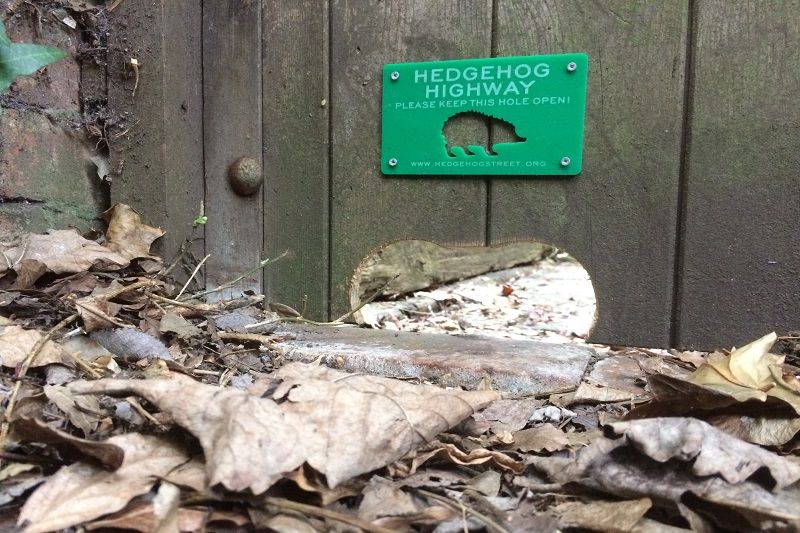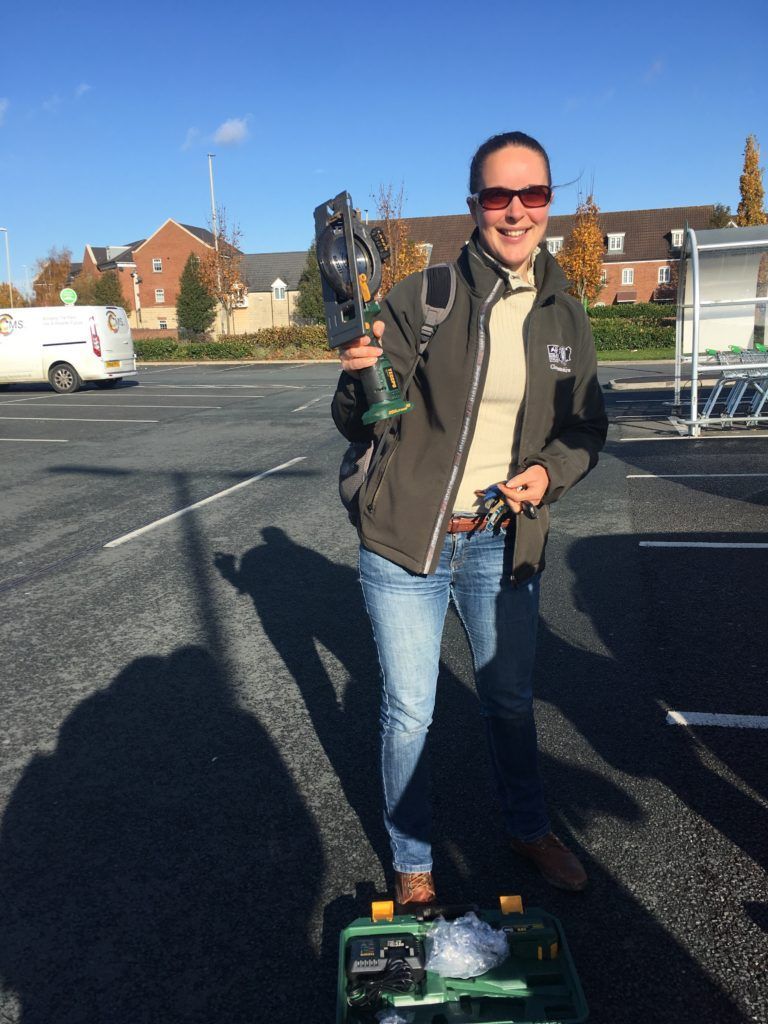Investigating the effectiveness of hedgehog highways
Hedgehogs are in trouble. We know their numbers have plummeted, we know they face many threats and we know that these threats vary depending on whether they’re rural or urban hedgehogs. This means not only do we need to act urgently, but that we need several solutions to ensure our hedgehog populations face a brighter future.
Dwindling habitat
As urban and suburban areas become busier and more congested, green spaces are squeezed and areas between them are becoming ever more inhospitable. For animals like hedgehogs, this is critical. Hedgehogs – surprisingly for such a small mammal – roam over pretty large areas to forage for food and find mates. The less suitable habitat is for providing the food and shelter hedgehog need, the further they need to roam. But that’s one of the major problems facing hedgehogs in our towns and cities. Walls, fences and roads all create barriers to movement.
Connecting gardens
For ten years now PTES and the British Hedgehog Preservation Society have been running a joint campaign: Hedgehog Street. A movement made up of tens of thousands of Hedgehog Champions, Hedgehog Street’s main aim is to get people to ensure their gardens aren’t isolated oases but instead are well-connected to the surrounding gardens, parks and green spaces through ‘hedgehog highways’. These highways can either be a natural gap under a rickety fence or a man-made hole enabling hedgehogs to enter and leave gardens easily on their nightly wanders.
Here at Hedgehog Street headquarters, we’ve been delighted with the interest and enthusiasm of our champions and the sheer number of highways that have been created. However, since we want our advice to be underpinned by sound science, we also want to properly scrutinise how well the highways are used and whether they do in fact help hedgehog populations. It’s difficult to measure the impact of such features on a species – especially when that animal is both nocturnal and hibernates for half the year. And when the feature depends heavily on many members of the general public taking part and volunteering their time, it can be all the more difficult to investigate. But a team from Gloucestershire Wildlife Trust (GWT) stepped up to the challenge and aimed to do just that.
How many ‘hogs?
Nicky Simpson and her colleagues selected three urban areas near Gloucester and Cheltenham. All three areas were known to have hedgehog populations. To understand whether hedgehog highways would help those hedgehog, Nicky and her team set out to monitor the animals’ presence before and after making the holes in people’s gardens. With more holes, there should be more habitat available, and therefore more evidence of hedgehogs across a wider area.
GWT used many creative ways to raise awareness about the project and encourage people to take part. As well as producing a dedicated website, they emailed, wrote to and door-dropped people in the target areas. Social media posts engaged people in explaining the aims, and Nicky even commandeered a drill to make holes for people if they didn’t have the means to do so themselves. Seven community events were held and training sessions were set up to teach people how to survey their gardens using hedgehog footprint tracking tunnels. Hedgehogs need gardens to be hedgehog friendly too – there’s no point being able to get into a garden if there’s no food or nesting sites there. Nicky’s team created a garden assessment so that locals could discover what features they should create to encourage hedgehogs, and which may be dangerous and should be removed.
Almost 200 highways were logged on GWT’s website, nearly 60 of which were created during the project. A video showing how to make a hole was viewed over 5,000 times; hopefully this means many more holes were created than were logged. The team recorded a 21% increase in the number of gardens with hedgehog access points within their study gardens, and a 39% increase in hedgehog sightings after people made highways to enable hedgehogs to get into their gardens. These are really encouraging results.
Communities need to work together to protect hedgehogs
However, maps created of the three study areas show that hedgehog evidence from tunnels and sightings are still very patchy. It’s not enough just to connect your own garden or green space to one or two neighbouring ones. We need to encourage whole streets, closes and cul-de-sacs to see their combined green spaces as a network for hedgehogs – and other wildlife – to wander through.
Nicky’s GWT team and all her volunteers have proved that people are passionate about hedgehogs and willing to help. But we must work together, and on a large scale for real impact to be made. Support for the project has been immense and really rewarding. Over 100 people became Hedgehog Champions, and thousands more attended events and engaged with the project through social media. Wildlife desperately needs our help, and that help is so much more impactful when we work together as a community, rather than alone.
This project is only possible thanks to our generous donors. Can you help by donating today?




